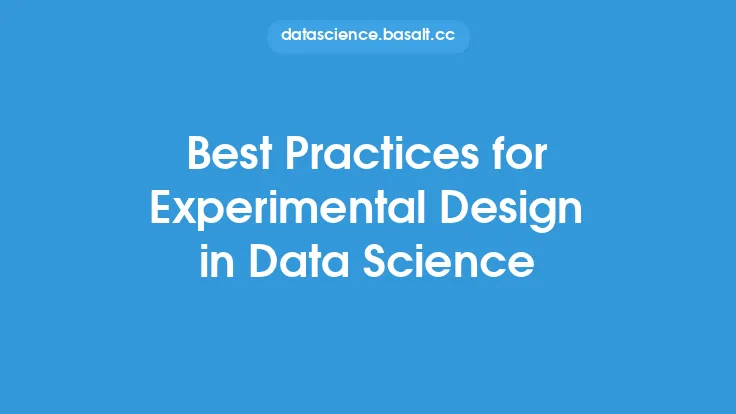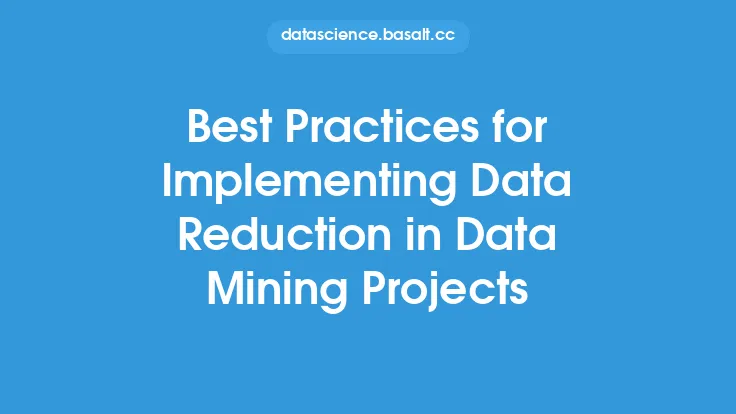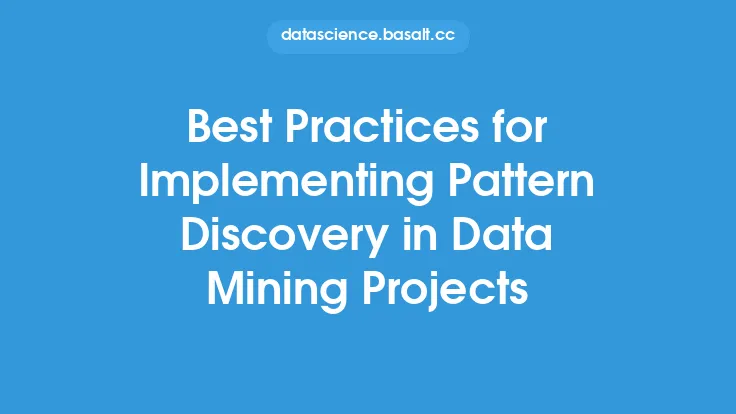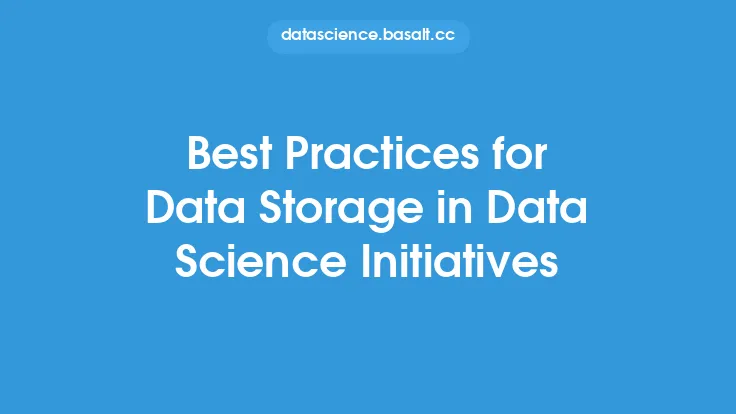Ensuring data accuracy is a critical aspect of data science projects, as it directly impacts the reliability and validity of the insights and models generated. Data accuracy refers to the degree to which the data correctly represents the real-world phenomena it is intended to measure. Inaccurate data can lead to flawed analysis, incorrect conclusions, and poor decision-making. Therefore, it is essential to implement best practices to ensure data accuracy throughout the data science project lifecycle.
Data Collection and Preprocessing
Data collection and preprocessing are critical steps in ensuring data accuracy. The quality of the data collected and the methods used to preprocess it can significantly impact the accuracy of the results. Some best practices for data collection and preprocessing include:
- Using reliable and trustworthy data sources: This includes using data from reputable sources, such as government agencies, academic institutions, or established organizations.
- Implementing data validation and verification techniques: This includes checking for errors, inconsistencies, and outliers in the data, as well as verifying the data against other sources.
- Handling missing data: This includes deciding whether to impute missing values, remove them, or use alternative methods to account for them.
- Data normalization and transformation: This includes scaling, encoding, and transforming the data to ensure it is in a suitable format for analysis.
Data Storage and Management
Proper data storage and management are also crucial for ensuring data accuracy. This includes:
- Using a robust and scalable data storage solution: This includes using databases, data warehouses, or cloud-based storage solutions that can handle large volumes of data.
- Implementing data backup and recovery procedures: This includes regularly backing up data and having procedures in place to recover data in case of loss or corruption.
- Using data access controls and security measures: This includes implementing access controls, encryption, and other security measures to prevent unauthorized access or tampering with the data.
- Documenting data metadata: This includes documenting the source, format, and any transformations or processing applied to the data.
Data Quality Checks
Regular data quality checks are essential to ensure data accuracy. This includes:
- Conducting data profiling: This includes analyzing the distribution, central tendency, and variability of the data to identify any issues or anomalies.
- Checking for data inconsistencies: This includes checking for inconsistencies in formatting, coding, or other aspects of the data.
- Identifying and addressing data outliers: This includes identifying data points that are significantly different from the rest of the data and deciding whether to remove or transform them.
- Using data quality metrics: This includes using metrics such as accuracy, completeness, and consistency to evaluate the quality of the data.
Data Validation and Verification
Data validation and verification are critical steps in ensuring data accuracy. This includes:
- Using data validation techniques: This includes using techniques such as data type checking, range checking, and format checking to ensure the data is correct and consistent.
- Implementing data verification procedures: This includes verifying the data against other sources, such as external datasets or expert judgment, to ensure it is accurate and reliable.
- Using data certification and accreditation: This includes obtaining certification or accreditation from reputable organizations to ensure the data meets certain standards of quality and accuracy.
Collaboration and Communication
Collaboration and communication are essential for ensuring data accuracy. This includes:
- Working with stakeholders: This includes working with stakeholders, such as data providers, data users, and subject matter experts, to ensure the data meets their needs and is accurate and reliable.
- Documenting data assumptions and limitations: This includes documenting any assumptions or limitations of the data, such as sampling biases or measurement errors.
- Communicating data results and insights: This includes clearly and accurately communicating the results and insights generated from the data, including any limitations or uncertainties.
- Using data visualization and reporting: This includes using data visualization and reporting techniques to effectively communicate the data insights and results to stakeholders.
Continuous Monitoring and Improvement
Finally, continuous monitoring and improvement are critical for ensuring data accuracy. This includes:
- Regularly reviewing and updating data: This includes regularly reviewing and updating the data to ensure it remains accurate and relevant.
- Monitoring data quality metrics: This includes monitoring data quality metrics, such as accuracy, completeness, and consistency, to identify any issues or trends.
- Implementing data governance: This includes implementing data governance policies and procedures to ensure the data is managed and used effectively and efficiently.
- Using data science best practices: This includes using data science best practices, such as version control, testing, and validation, to ensure the data and models are accurate and reliable.





